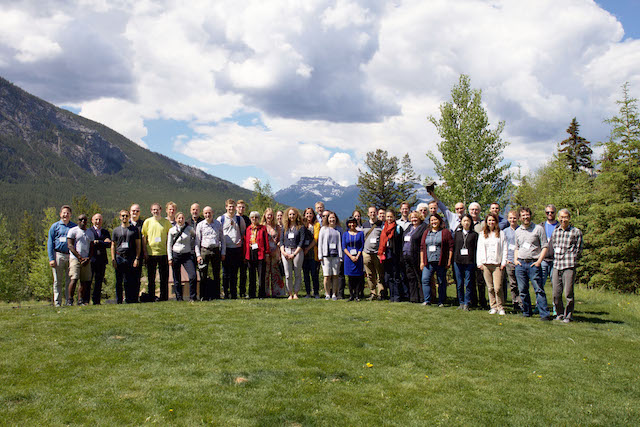Bridging Cellular and Tissue Dynamics from Normal Development to Cancer: Mathematical, Computational, and Experimental Approaches (19w5080)
Organizers
Andreas Buttenschoen (University of British Columbia)
Leah Edelstein-Keshet (University of British Columbia)
Elisabeth Rens (University of British Columbia)
Description
The Banff International Research Station will host the "Bridging Cellular and Tissue Dynamics from Normal Development to Cancer: Mathematical, Computational, and Experimental Approaches" workshop in Banff from June 16 to June 21, 2019.
In 2017, the Canadian Cancer Society reported that an estimated 206,200 Canadians will be diagnosed with cancer this year. Cancer has a devastating effect on the lives of many Canadians. While significant advances in treatment have been made to date, we are still far from a cure. One of the deadliest hallmarks of cancer is its ability to invade distant tissues (metastasis). But how and why does this happen?
Despite extensive medical research, we still lack a basic understanding of the mechanisms behind cancer progression. For this reason, researchers around the world harness the power of mathematics, physics and scientific computation to study both normal and diseased tissue development. There now exist extensive models in cell signaling, polarity, motility, and mechanics, processes that are involved in both normal and cancer cell dynamics The field is moving to a higher level by scaling these models up to tissues and collective cellular behaviour, while recognizing the importance of intra and inter-cellular signalling networks.
This development is giving rise to many new questions and challenges that this workshop explores. How do we use advances in imaging to improve our models? How do we refine models to include effects of long-ranged interactions in a tissue, and how do we analyse the resulting mathematical equations to gain new insights? Answering such questions requires the development of new mathematical, computational and biological tools. The critical objective of our workshop will be to identify what is required from the three distinct communities to move forward so as to address these challenges. For this reason, our workshop will gather the top practitioners with track record of outstanding scientific innovations in this key area.
The guiding question of this workshop is: How do we go beyond existing biological and mathematical models to develop a new understanding of tissue dynamics in normal and disease states?
The Banff International Research Station for Mathematical Innovation and Discovery (BIRS) is a collaborative Canada-US-Mexico venture that provides an environment for creative interaction as well as the exchange of ideas, knowledge, and methods within the Mathematical Sciences, with related disciplines and with industry. The research station is located at The Banff Centre in Alberta and is supported by Canada's Natural Science and Engineering Research Council (NSERC), the U.S. National Science Foundation (NSF), Alberta's Advanced Education and Technology, and Mexico's Consejo Nacional de Ciencia y Tecnología (CONACYT).






